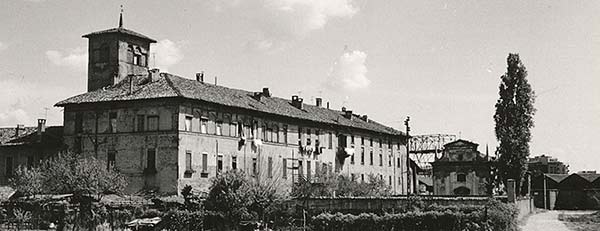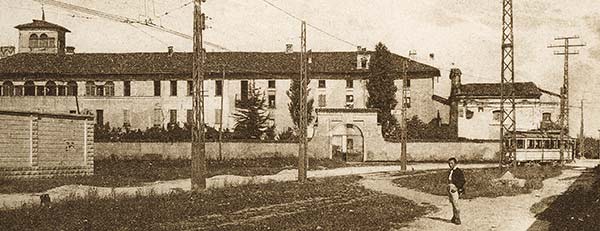History
Villa Torretta is one of the most fascinating historical villas in Milan
Located just over the northeast border of Milan, Villa Torretta is a noble residence rebuilt on the site of an earlier building, probably a medieval fortress.

It is said that several historical figures spent time here, including, in 1323, King Robert, who chose to meet in this noble villa Marco and Galeazzo Visconti’s troops. Some reporters remember it as a “fortified place nearby Bicocca”, and others point out that the Tower “was used to be a lookout for Bicocca’s castle.” Moreover, there are texts that claimed an underground burrow that connects “Torretta” with Villa Arcimboldi. Its dubbed U-shaped structure creates two courts: one rural and the other noble. This approach reflects a double social role, according to a typical use of suburban villas in Milan.
Between the 16th and 17th century, thanks to the Countess Delia Spinola Anguissola Villa Torretta became a center of good living and beatitudes. From this time on it was one of the most famous location for celebrations, jousts and dances.
Following an enlargement and ornamentation process, the halls on the main floor were decorated with frescoes, as well as portraits of noble families and landscapes. The house and the gardens were embellished with marbles, rare plants and flowers.
When Delia died without having any heirs, the property passed to Marino’s family, then to D’Este, later to Serbelloni and at the end of the 18th century to Busca Arconati Visconti.
In 1943 the ownership documents related to Villa Torretta’s history were destroyed by Second World War bombing. Further changes in ownership occurred during the 20th century caused its transformation into a rural building and dormitory for the workers of the nearby Breda Company; these changes prompted Villa Torretta towards an irreversible state of decay.
Its frescoes were hidden by wooden ceilings and living rooms divided into smaller rooms. Upper floors balconies were used to get new rooms; the same happened to the beautiful porch, which had become a stable for farm animals.
During his slow process of decay, the villa has gradually lost all its noble nature. Thanks to the recent restoration completed in 2002, including the restoration Santa Margherita oratory, Villa Torretta is now back to its former glory.

The Chapel (Oratory Of Santa Margherita)
Inside Grand Hotel Villa Torretta’s park there is Santa Margherita’s Oratory, an important example of Milan’s chapel.Countess Delia Spinola Anguissola on the site of an earlier religious building probably a medieval one rebuilt the chapel, dedicated to St. Margherita, in 1607. Co-owners, as shown by a 1603 inscription, were the Saints Dominic and Francis; the same inscription commemorating “comitissam Deliam Spinolam Anguisciolam” as the founder. The three Saints were depicted on three glass windows (now disappeared): a decorative and unusual element of decoration for an oratory, as in the descriptions contained in the reports where most of the windows were closed by wood doors or canvas.
Oratory contains different frescoes with Saints, the Virgin and angels, whose paternity is uncertain. Still consecrated, it is the site of Sunday mass. Little curiosity: Mastroianni in“La Notte” 1961.
Masterpiece of the Italian Neorealism, awarded with the Golden Bear at the Berlin Festival. Some frames of the movie where Marcello Mastroianni and Jeanne Moreau were filmed inside the courtyard of Villa Torretta overlooking Santa Margherita Oratory.
Villa restoration














































